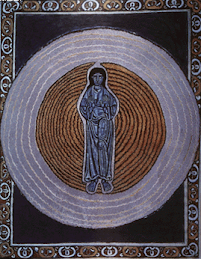The Bible in the Life of the Church Project is an ongoing attempt among Anglicans to clarify to ourselves and one another how we read and understand the Bible. It is a good project to be about. It is one of the fundamental questions that hang over the church - not just those of the Anglican Communion, but all churches. At least it is in churches without a magisterium. It has particular urgency in churches where questions raised by historical-criticism are accepted as legitimate. But, it is a question being asked among Evangelicals. It is harder and harder for folk to affirm that the Bible stands on its own. Hence the increasing appeal of the early and medieval church for many Evangelicals. It is harder and harder to claim the Bible is perspicuous, i.e., plain to the understanding. There are too many fundamental disagreements between readers of scripture for that to be so. What does it mean for the Bible to be inspired? And then there is the question as to which writings should be included in the Bible and considered scripture. Who decides? How and why?
So what is the place of the Bible in the life of the church? How do we read it faithfully so we are "challenged, judged and changed" by God's Spirit which breathes through the pages of the Bible? Who decides which competing readings are faithful and how? I'm reposting my attempt to make sense of some of these questions. I would cherish any feedback, positive or critical, on this:

I was invited to make a presentation at a Miqra event put together by the youth leaders of the Diocese of Chicago. I've posted a slightly expanded version in installments. Here's the whole thing with links:
Introduction
Reading scripture, according to the great 2nd century theologian Irenaeus of Lyons, is like configuring a mosaic of precious jewels. That mosaic can be configured in more ways than one. According to Irenaeus, it can be configured to reveal a portrait of the King – Jesus Christ as the Church knows him – or it can be configured, as it was by heretics and other false teachers, as something else, say a fox. More
Part 2: Among other things, honoring the scriptures means we must attend to the kinds of texts they are rather than impose theories of what we think they should be if they are inspired and authoritative. More
Part 3: Can we identify some guidelines or criteria by which we evaluate more faithful biblical configurations from less faithful or even faithless interpretations? Not all configurations are faithful. Not all faithful configurations are equally faithful. But there might be a range of recognizably, more or less, faithful configurations. The following criteria, based on how the canon of scripture came to be accepted and how the early Church read the Bible, are suggested to assist in configuring the mosaic of scripture. More
1. The Criterion of Jesus Christ
2. The Criterion of Love
3. The Criterion of the Rule of Faith
4. The Criterion of the Church's Prayer
5. The Criterion of the Church's Tradition
6. The Criterion of Comprehensiveness
7. The Criterion of Dissimilarity
8. The Criterion of Community
9. The Criterion of Character
No one criterion is adequate and no set of criteria will assure agreement on particular questions of interpretation. But, an interplay of the above criteria would provide a broad measure of relative faithfulness as we seek to configure an image of the King rather than a fox or a dog.






No comments:
Post a Comment